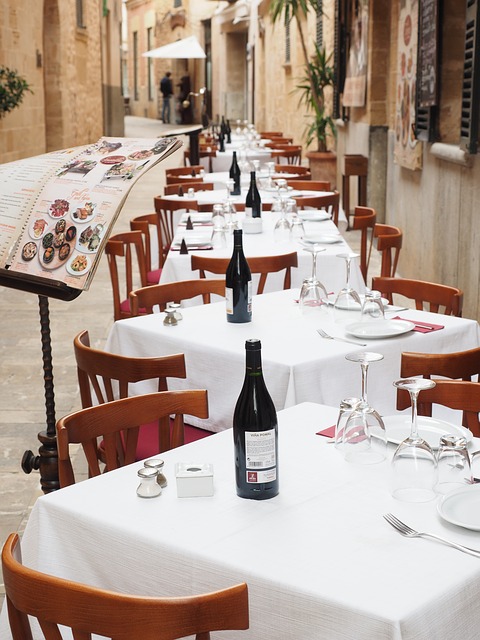Posted: Jul 15, 2017

How the country's best small restaurants are surviving today's dining scene
Are small restaurants dying? A proliferation of fast-casual “concepts” and restaurants with vast dining rooms could easily make diners think the era of small restaurants that sprung to life during the recession is giving way.
Mario Batali’s La Sirena, for example, boasts two dining rooms that each seat around 100, plus a patio and private dining rooms. It’s a big restaurant. The same goes for Steve Samson’s buzzy Rossoblu, which seats 120, and Jean-Georges Vongerichten’s recently opened 150-seater, both in L.A. Across the country, new developments and hotels with buzzy chefs like Andrew Carmellini attached (he's opening restaurants in Baltimore and Detroit in the coming months) prove the trend isn’t limited to New York and L.A.
It's no wonder chefs like Brendan McHale, who recently left his charming 30-seat NYC spot, The Eddy, to move to Wisconsin for a change of pace, have called small restaurants “a dying breed.” But while some are shuttering, other small restaurants—think 60 seats or less—run by smart, strategic chefs are going strong.
How do they do it in the face of rising rent, steeper food costs and more competition?
“The model for running a small restaurant is pretty specific,” Henry Rich, co-owner of several petit and perennially busy Brooklyn restaurants like Italian gem Rucola and newcomer Metta, explains. “You need to know exactly what the neighborhood wants and be part of the community.”
Santos Uy, who owns a triplet of intimate dining and drinking spots in L.A., and has helped open several others, agrees. In his city, diners may hop in the car to reach larger restaurants they've read about, but for smaller places, Uy says, “You have to serve the people around you, and if what you’re serving is what they want, they’ll come in.”
In NYC, as the market continues to get more competitive, that neighborhood feeling has to speak to locals and out-of-towners alike. “You need both things: Your regular guests and people from all over the world and city [need] to feel like they’re regulars," Andrew Tarlow, who owns a cluster of well-loved restaurants in Brooklyn, including Diner and Roman’s, says.
Cracking the code for what makes a small restaurant work, in other words, isn't just about pinpointing exactly what a given neighborhood wants, but also how that neighborhood fits into the whole city's ecosystem—one that differs considerably between New York and L.A., for example.
Crucial for many success stories is the concept of safety in numbers. “Once you get three or more [restaurants], you can start negotiating with vendors for a few different accounts. It’s a lot easier,” Rich says.
Resources can also be shared across restaurants run by the same people. “We cross utilize,” Alex Raij, who owns three small restaurants and a café in New York, explains. “Our waste is very well controlled . . . me and my husband are basically shleppers,” bringing cuts of meat that may work better at one restaurant than another across the city.
What's more, the teams go beyond sharing just infrastructure and ingredients. “One restaurant learns from the mistakes or successes of another,” Rich adds.
They're lessons learned all the more quickly by a tight staff, who, by necessity, may have multiple responsibilities and feel more invested in their kitchens. Ken Oringer, who owns both smaller and larger restaurants in Boston and New York, points out, “You can get by with smaller staff, and it’s nicer to have people wear multiple hats.” At Uy’s French wine bar, Mignon, which serves escargots and oeufs en cocotte to just 18 seats, “there are two people who work there in a shift. One person pouring wine, one person making the food—and they’ll pour wine, too, and they’ll do the dishes, too. They do everything,” Uy says. "One of the most expensive things is staffing your restaurant," McHale, who scaled back on a prep cook and runner five days a week at The Eddy, adds. So keeping it lean is extra important.
There's also added pressure to fill seats and turn tables in a small space, which can't rely on sheer mass. One technique is serving style: By doing tapas, which doesn't require separate coursing, at Toro in Boston, Oringer says, “We can still do 300 people a night even though it’s 60 seats. That’s been key to the formula.” At Coppa, which seats 40 and serves Italian food, “everything is meant to be shared,” which also translates to a speedier pace.
Ultimately, there's less room for error at these charming haunts. And these days, it's not enough to follow any one strategy alone, be it catering to the neighborhood, turning tables quickly, keeping a small and nimble staff, or relying on a network of restaurants. You need to have the right formula, which could include some or all of the above. And then, of course, some places just have that X factor.
By Devra Ferst
July 13, 2017
Source: Tasting Table
Go-Wine's mission is to organize food and beverage information and make it universally accessible and beneficial. These are the benefits of sharing your article in Go-Wine.com


The Wine Thief Bistro & Specialty Wines is a locally owned small business in downtown Frankfort, IL offering world class wines in a relaxed, casual gathering spot for friends and family. Offering world class virtual tastings and touchless carryout.
https://www.twtwineclub.com/aboutus
Go-Wine 25 Great Wineries in US selection prioritizes quality, value and availability.
www.go-wine.com/great-wineries-in-america
Tasting wine is a nice experience, but visiting the places in which wine is made is a magic moment. Available in New York City for touchless pickup.